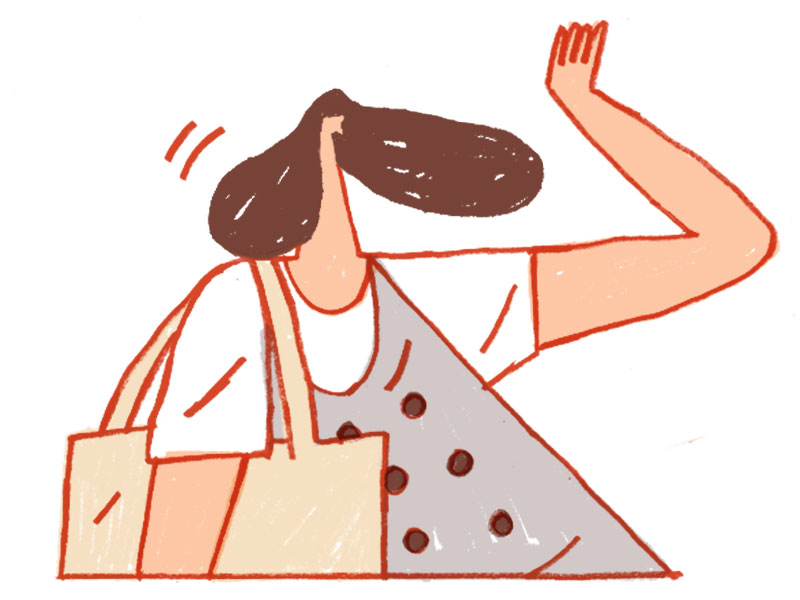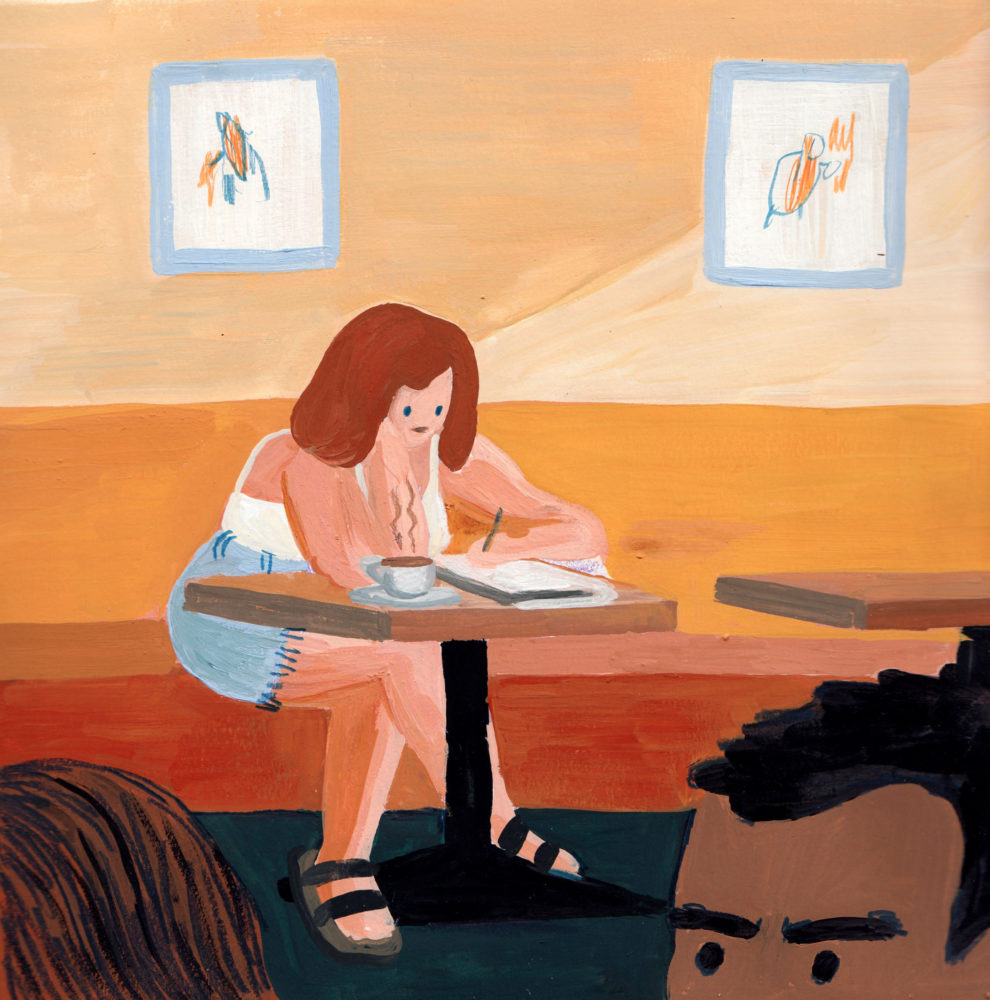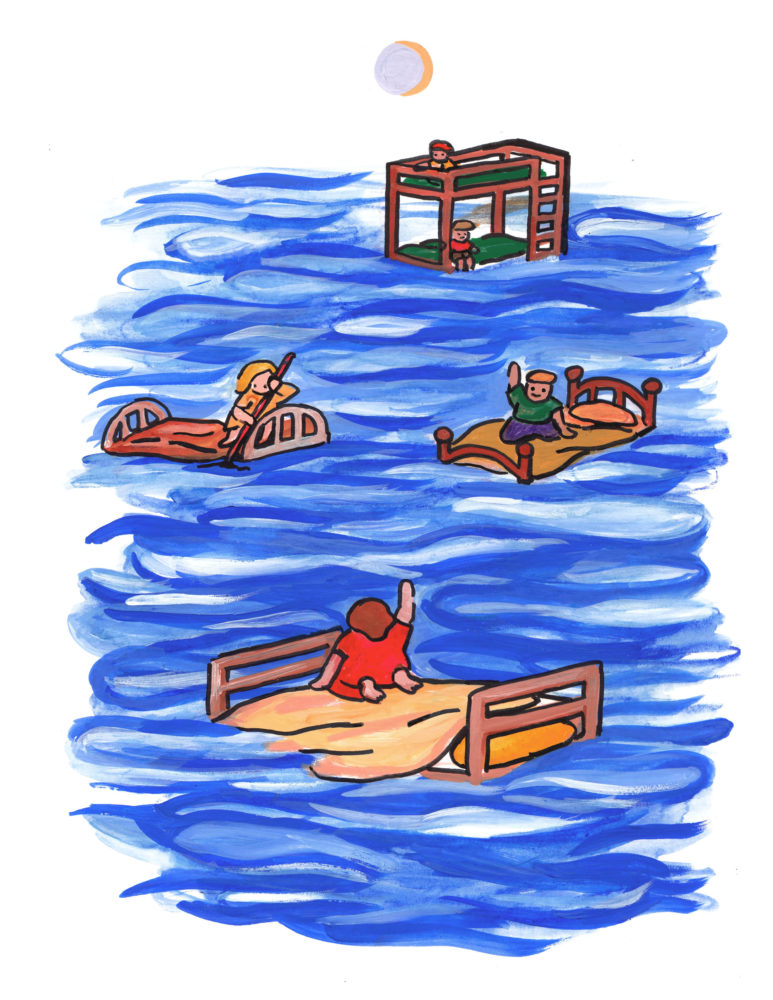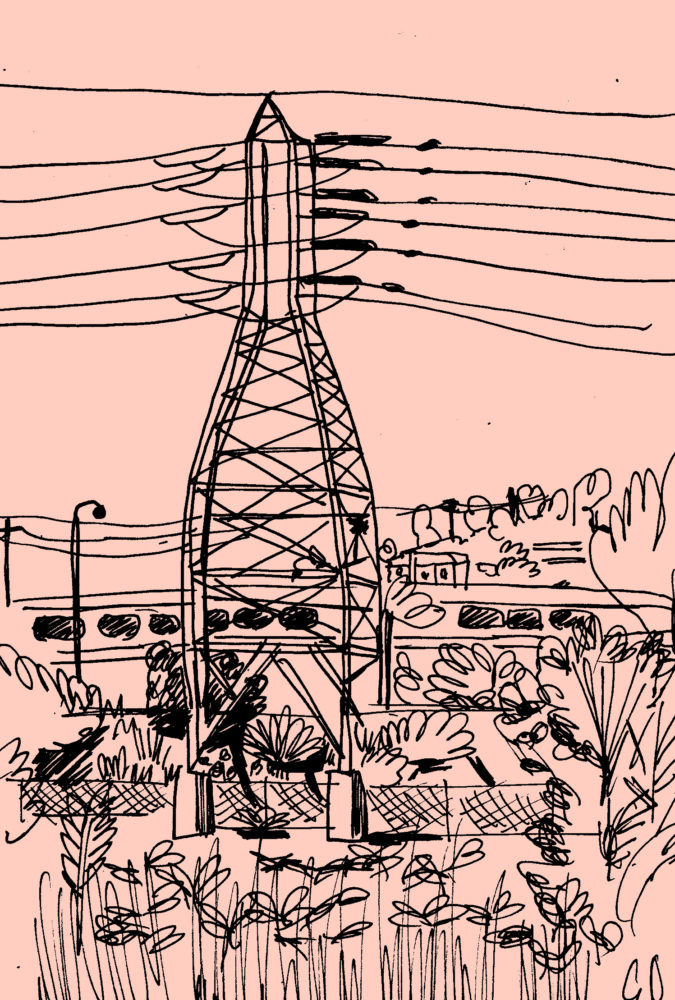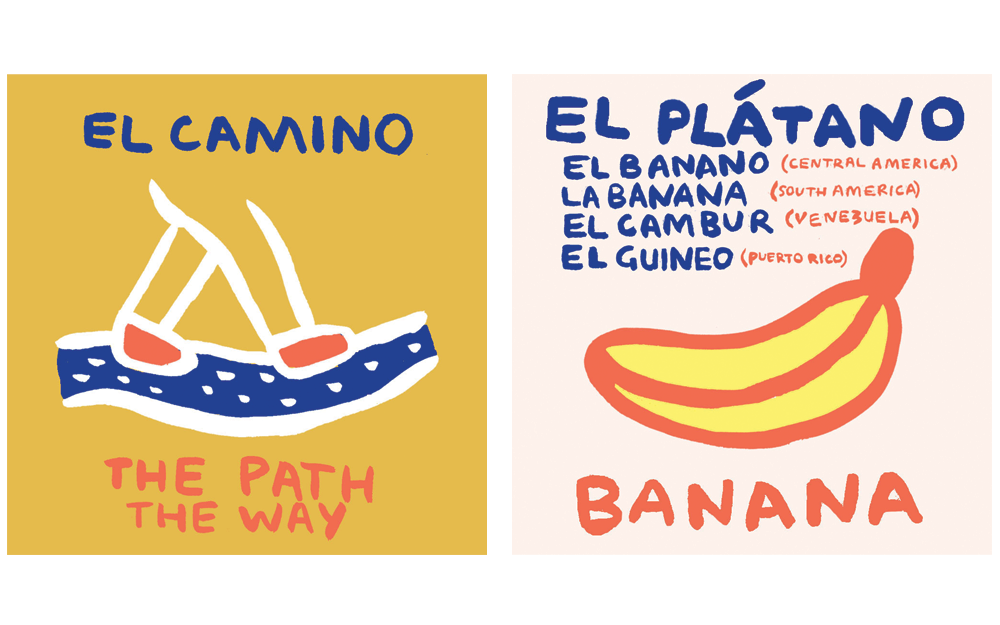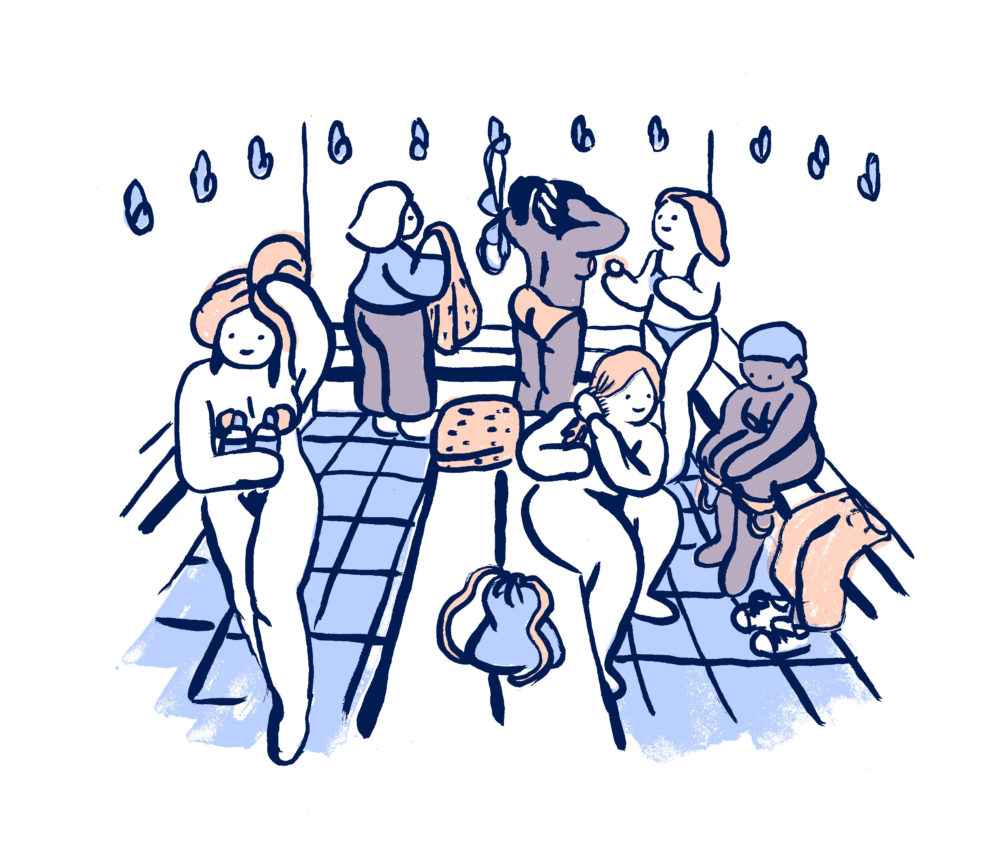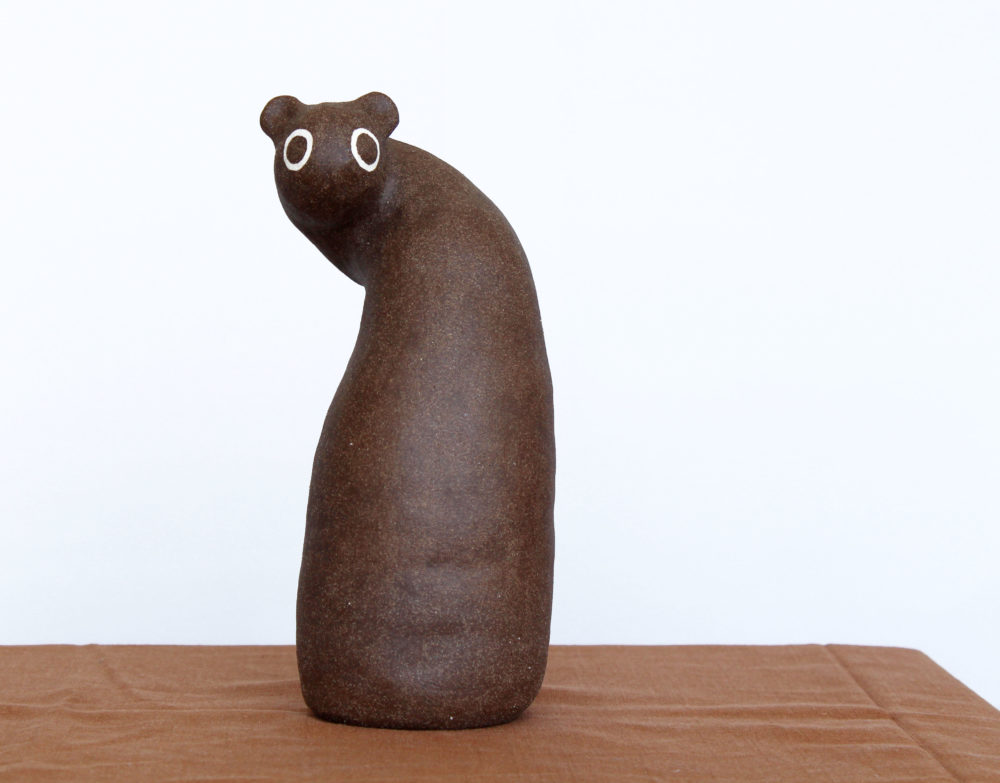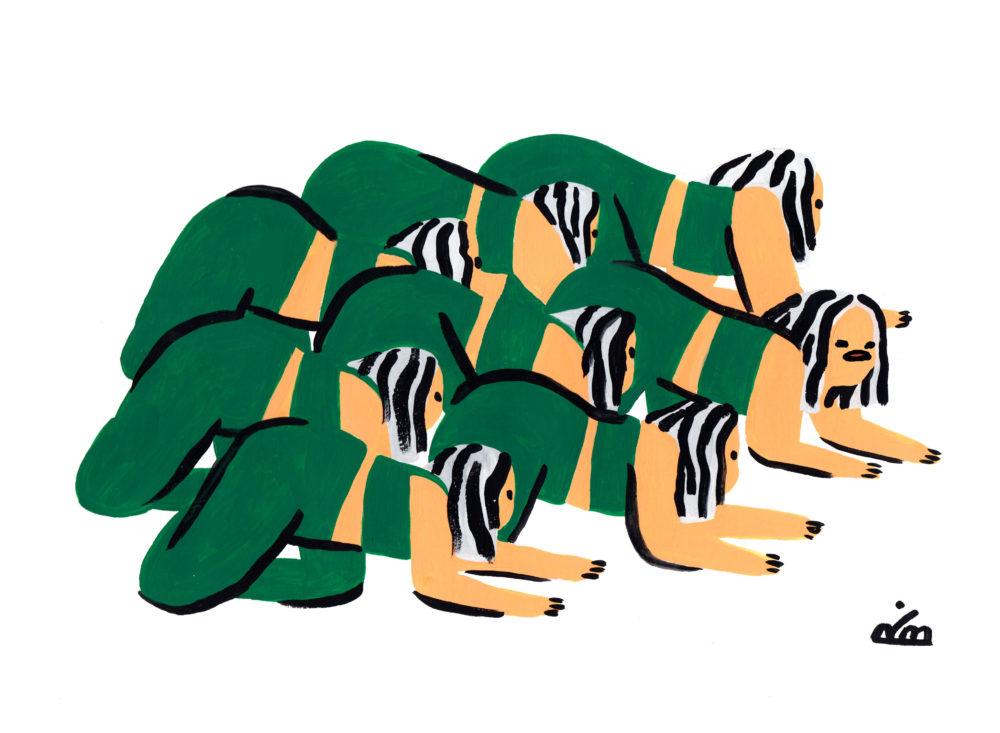Interview and Portrait by David McMillan
I first met Rosie Brand when she and her husband, Nick Edwards, moved to Bristol about 3 years ago. We had met through our mutual friend and illustrator, Ed Cheverton. We had a year of their great company before the Bristol gang started moving on; Jayde and I headed off to Berlin and Rosie and Nick took it one step further by moving all the way to Los Angeles – where she is still based – making amazing comics and her unique ceramics.
Hello Rosie, can you start by telling the lovely people a little about yourself? Where you’re from, where you studied, and where you’re at now?
Hi Dave!
Well, I’m originally from the countryside in the south of England, just outside London in Bucks – it was very small-town sheep and fields type of place. I then went off to study illustration at the University of Brighton. After that I moved to London, then to Bristol, NOW I’m in Los Angeles, USA! I moved a bunch before ending up here in the Land of the Brave and Free.
What do you feel was the best lesson you learnt while studying? Is there anything that still sticks with you or do you feel you’ve thrown out a lot of advice of tutors as your practice has developed?
Hmmm… this is going to be a long answer, sorry!
Brighton was a great university and I learnt so much in my time there. I was lucky enough to be in with a really great year of people who were all very active on the course and there was a really engaging dialogue going between us; about making art for money as opposed to making art for people, two things I feel the world of illustration bridges. It really felt at the time that we were a community of artists, and I guess that’s what art school is meant to be, this incubation bubble. That bubble was responsible for starting me off in the way I think now, and with a really inspiring group of people which I am really grateful for.
However, in the mix of it all was some really bad advice coming from the course itself. About half of our year on illustration was told adamantly, ‘You cant draw, do something else’, a statement that held such finality, a scary thing for a group of 20 year-olds who’d decided to spend a bunch of money on a course they hoped would give them the tools to make a career out of drawing. I guess their intention was to push us to our limits, push those off who weren’t dedicated, expand the mediums we were working in, and see who could float. In my case I was angrily driven by the need to prove them wrong, but I can name loads of really great artists from that course who were totally put off making art because of it. Its a very specific kind of advice suited to a specific kind of learning style.
Brighton illustration prides itself on being an ‘ideas’ course; ‘We don’t have a house style’, was their favorite slogan at the time. They really wanted to produce a good group of diverse artists each year, which is a commendable ambition in some ways – I don’t want to damn it totally! Although I learnt so much about critical thinking from that sort of teaching, I can’t say I came away with very many craft-based skills, something that I think is a common problem with UK art schools.
How do you find the west coast, or specifically LA art and illustration scene compared to that of England? Having lived in the cool creatives cities of London, Brighton and Bristol…
So far I have found its hard to be part of a ‘scene’ in LA in the same way as in the smaller cities of the UK. The way things work here is so wildly different from the interconnected cities of Europe, that you can walk around and feel in amongst people all the time. Cars and freeways rule the Los Angelean landscape, making it a very isolating place in some ways. However, there are some really awesome and inspiring people here; I’ve met a lot of people who work in animation, and it’s great to be linked to that world, but I’m also quite happy to exist on the periphery. I like to work alone, and dip in and out of creative communities. I’ve been working out of the Women’s Center for Creative Work recently, doing workshops and teaching for a middle-school kids program. The WCCW is a local non-profit community-run centre for female-identifying artists and creatives. Its been really inspiring to have access to their events and meet this wide range of people of all sorts of disciplines.
How do you feel your work has developed since moving?
I feel like this expansive art world here has really helped me to come into my own creatively. And there’s still so much to explore. I immediately felt the difference of the positive American attitude when I first moved coming, from the more reserved social manner of the Brits. Everyone seemed so excited about everything here; ‘What are you working on? Oh that’s so awesome. Go for it!’. I found it very nourishing and encouraging. I had new challenges – not having that circle of close friends or family within arms reach. I had to get it together and become more confident, it made me better at reaching out to people. I think just now I’m figuring out how that has massively changed how I work, and can get work. It’s a good skill to develop! I was also given another incubation period in a way, in the time it took to adjust and create a life here- I was simultaneously making and making and making – it was the way I was dealing with all the changes, and it really helped to hone my craft and to figure out what I want to put out into the world.
Peanut Butter and Honey – excerpt from painted children’s comic, Rosie Brand.
Since moving to LA you have started regular neighborhood walks and drawing workshops. Have you found that helpful in finding out more about the community around you and helping you become part of LA?
Walking and drawing around the neighborhood just started out as this thing I was doing on my own, because I was so intrigued by the look of everything here. The old painted signs on the sides of buildings, the gas stations that look straight out of the 50s, the spaghetti mess of the sky with all its telephone wires, big pylons wrapped with vegetation along the sides of the concrete blanketed river. I then took to leading a few workshops out of WCCW and was amazed by the turn-out of the artistic community. I am hoping to do more in the future, and have been speaking with the directors of WCCW about how we can adapt these workshops in a way that is inclusive for all of the community. I am very aware of the connotations of being an artist living in north east LA – the gentrification is very stark to see, and to find a way in which I can participate in a way that’s not harmful is the aim. To bring everyone together to draw and make art for free, to notice the beautiful anomalies of the neighborhood, to hear how its changed over the years from local residents, stay tuned for the ‘Walk and Draw’ evolution!
Sketch from Frogtown for Neighborhood Walk + Draw, Rosie Brand.
You’ve also started to illustrate your adventures in learning Spanish. Can you tell us a little bit more about this personal project and what brought it about?
I live in an area of North East LA that has a huge Spanish speaking community. The kids I teach art workshops to are also bilingual. I started to feel like I was really lame not knowing any Spanish! So I set myself the task to learn a bit every day, got myself a Spanish Dictionary and started drawing as I went. I’ve been publishing my slow progress online – it’s been a really fun and playful project! It’s interesting learning the different words that mean different things for all the regions of South America, and my friends here (and the kids I teach) have been helping me learn the nuances. Learning languages is great because it engages your brain in a totally different way and points your attention to the ways that we communicate that we don’t always think about.
You’ve been showcasing that ongoing project, as well as recent comics via your Instagram. How do you find the platform helps in putting your comics out there? And what’s your attitude towards social media?
I’ve found Instagram to be a helpful platform to get work out there into the world. Recently I’ve felt that Tumblr is full of tumble weeds, and its not as active a community as it used to be. Instagram is so immediate – everyone is on it all the time (in good and bad ways). But in the way the app is built, it can be a bit soul destroying to be posting things you’ve put so much heart and soul into, for people to just scroll right by. So I started trying to make stuff that would engage people. To try and use it in a positive way – to tell stories, make people laugh or communicate something more than just the aesthetic. I’m not sure if it always works! But I know Instagram at its best is a really great way to connect with other artists, and when it works like that it feels good, and not so much like you are a tiny speck in the void of the internet!
You also play a lot with the female characters and the female form in your ceramics and illustrations. What is it about the shapes or even mythology attached to women that interests you?
I think my focus on women in my recent work stems from a need to understand myself and my standing in the world. When I was a kid watching cartoons or reading books, I always found myself wanting to play the boy character, relating to the heroes of the story. They were the adventurers, they had whole characters that were more attractive and interesting than their female counterparts. I just thought girl characters were less interesting. Now that I am older, I can look back on that thinking and it’s so confusing! I had just readily absorbed that from what I had access to as a child. It’s depressing! Now I think a lot has changed in the world and its portrayal of women, and a sadly lot hasn’t changed.
I want to make stories for children that follow engaging girl characters. I want there to be sensitive boy characters too. I want to make stories for myself and other women to help us understand ourselves. Why aren’t we the hero? What does it change about the hero mythology if the hero archetype is female? My recent series of mini-comics ‘Without’ explores these thoughts. I’ve been researching different interpretations of women’s roles in mythology and responding with my own comics and illustrations.
Excerpt from Swimming webcomic, Rosie Brand.
A lot of your work deals with spirituality and connections to earth, can you tell us a little more about that? Is your use of ceramics a deliberate decision so as to create a connection between your characters and nature in using such natural earthy materials?
Ceramics is an interesting medium – it’s one of the first forms of art humans ever made. Before there was anything, we were making stuff out of mud with our hands. Maybe there’s something innately instinctual about the medium; it definitely feels like a very different way of working to drawing. When I first moved to America, I had been working with ceramics for a year or two before, but moving to an entirely new and strange environment, it really became a refuge for my over-anxious mind. It’s very physical, and takes your whole body and attention to throw with. When my brain was jittering away from me, it was a way to bring myself back into my body and feel okay again. I delved into the making process and for a while the work I was making seemed to come from a different place. My comics and stories have always pivoted around thoughts on why humans make stories and what we’re making them about. Now I feel like its all coming full circle and the two things are joining together and making sense with each other. Using ceramics as a part of my thinking process has really expanded the world I’m creating.
Ceramic Sculpture from Collection I: Spirits, Rosie Brand.
Do you feel you are trying to create a spiritualness with your ceramic pieces? Like they are your own personal religious symbols and statues for your beliefs about the world and how you interact with it?
I’m not sure where I stand spiritually. But there is a ‘spiritualness’ I guess about ceramics! In the way you make it, its much less, ‘I want to create this thing because…’ and more ‘Oh this is a thing I’ve made, where did that come from?’ It helps feed into my other projects that take on more of an anthropological angle. I am really interested in religious stories of all cultures, where they meet and link up, what symbols reoccur in stories told on different sides of the world, what that says about the peoples who tell the stories.
One time whilst working out of a communal ceramic studio in LA, I met a woman who was throwing pots there. I struck up a conversation with her, you know, what do you do, etc. etc. She said she was an archeologist, specifically focused on Greek pottery, and so she was learning to throw the same shapes now so as she could better understand the mindset of the ancient people who made the things that she was digging up. I just thought that was the coolest reason to be learning how to make pots. So maybe that is an element of what I’m doing.. maybe I can steal her answer.
Whilst I’m writing stories inspired by our mythologies and the psychological frameworks in which we think, I also have this thing that helps me get to the root of how I’m thinking.
Excerpt from Without mini-comics ruminating on women’s roles in mythology, Rosie Brand.
What does the future hold for Rosie Brand? Any projects you’re working on you wanna talk about?
I’m excited about the comics and drawings I’ve been doing recently. The second issue of mini-comic ‘Without’ will be out soon, printed in 2 colour riso. And I have a few ongoing webcomics to be on the look out for on all the social media things. I’ve just felt this influx of freedom and playfulness in my work, maybe its a little bit of finally feeling settled and more connected to the community here. I’m excited to make new things everyday!
I’ve also just received a teaching artist residency in LA – for the next year I’ll be teaching my own art curriculum to a few different age groups of children, in a library in the city. I’ll simultaneously be working on my own projects, and later exhibit them at the end of the residency. The non-profit program, Project Art, runs the residency, aiming at bringing art education to areas of the US where the schools don’t have access to it. It’s really exciting and a little bit intimidating! I’ll be sure to be posting about it soon.
Also where can the people find out about you, see your work, buy your stuff, or find out about upcoming workshops?
Find me on my website rosiebrand.com – where you can buy ceramics, comics and prints too. I regularly update my Instagram @rosiebrand, where you can find out about upcoming workshops and new things in progress, and I’m trying to be better at Twitter! @rosie_brand 🙂
Thanks so much Dave!
See more at Rosie’s website, Instagram and Twitter.
Read our interview with David, and see more of his work at his website and Instagram!
All images copyright Rosie Brand, except the top portrait, copyright David McMillan

